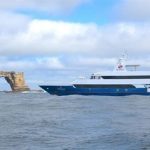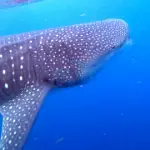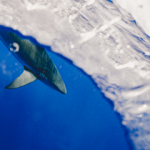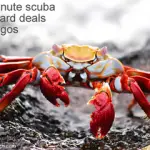
When can you see hammerhead sharks in the Galapagos Islands?
Out of all the shark species, probably the most recognisable shark is the hammerhead shark. With it’s distinctive hammer-shaped head and with eyes on the ends of its ‘hammers‘. One of the best places to see hammerheads in the world is the Galapagos Islands, but when is best time to see hammerheads in Galapagos?
Whilst it’s possible to see hammerheads year-round in the Galapagos Islands, the best time to see hammerheads in the Galapagos Islands in large numbers is between January through April. You are better to dive around Darwin and Wolf Islands where hammerheads are most common. But you need to be suitably experienced and have the right scuba certification level to dive the Galapagos. Plus you can only reach Darwin and Wolf by liveaboard boat.
The best way to dive the Galapagos Islands, and especially Darwin Island and Wolf Rock, is by a scuba diving liveaboard. You can check the latest and best deals on Galapagos liveaboards using the following window:
When is the best time to see hammerheads in Galapagos
The Galapagos Islands see some of the largest schools of hammerheads almost anywhere in the world. So before I explain when is the best time to see hammerheads in Galapagos, let’s take a look at why these unusual looking sharks visit these Islands in the Pacific.
Why are there hammerheads in the Galapagos Islands?
The Galapagos Islands are the tip of a huge mountain that rises from the sea floor thousands of metres below. The nearest land to the Galapagos is the coast of Ecuador which is around 960 kilometers (600 miles) away. Isolated sea mounts like the islands of the Galapagos create oasis’s where life flourishes.
The key factor for all the creatures that live beside this archipelago of islands is the deep ocean currents. Deep beneath the ocean these currents hit the flanks of these seamounts and are deflected upwards. These upward currents bring with them a rich soup of nutrients.
It is this combined effect that attacks the concentration of life, which feed on these nutrients. In turn these fish attract predators. These predators include sharks in huge numbers.
More Reading: How to book a last minute Galapagos liveaboard (Galapagos diving deals)
But why are the hammerheads at the Galapagos?
But what about the scalloped hammerheads that visit the Galapagos? Why are they there in such huge numbers? Bearing in mind in the El-Nino year these numbered some 1,000+ hammerheads.
Whereas the year-round residents of the Galapagos Islands that feed on the up-welling of nutrients are predated on by tuna and silky sharks, the hammerheads are there for different reasons. Hammerheads normally live in the open oceans and feed in deeper waters on squid. They’ve never been seen feeding around the Galapagos, so why are they there?
It’s understood that the hammerheads are there to visit the cleaning stations to be cleaned by king angel fish, but also to breed. From researching these large schools of scalloped hammerheads, it appears that the largest females tend to dominate the centre of the schooling. Whereas the smaller ones are on the outside. The males are trying to mate mostly with the females in the centre.
See below a video from National Geographic on Scalloped Hammerhead pups.
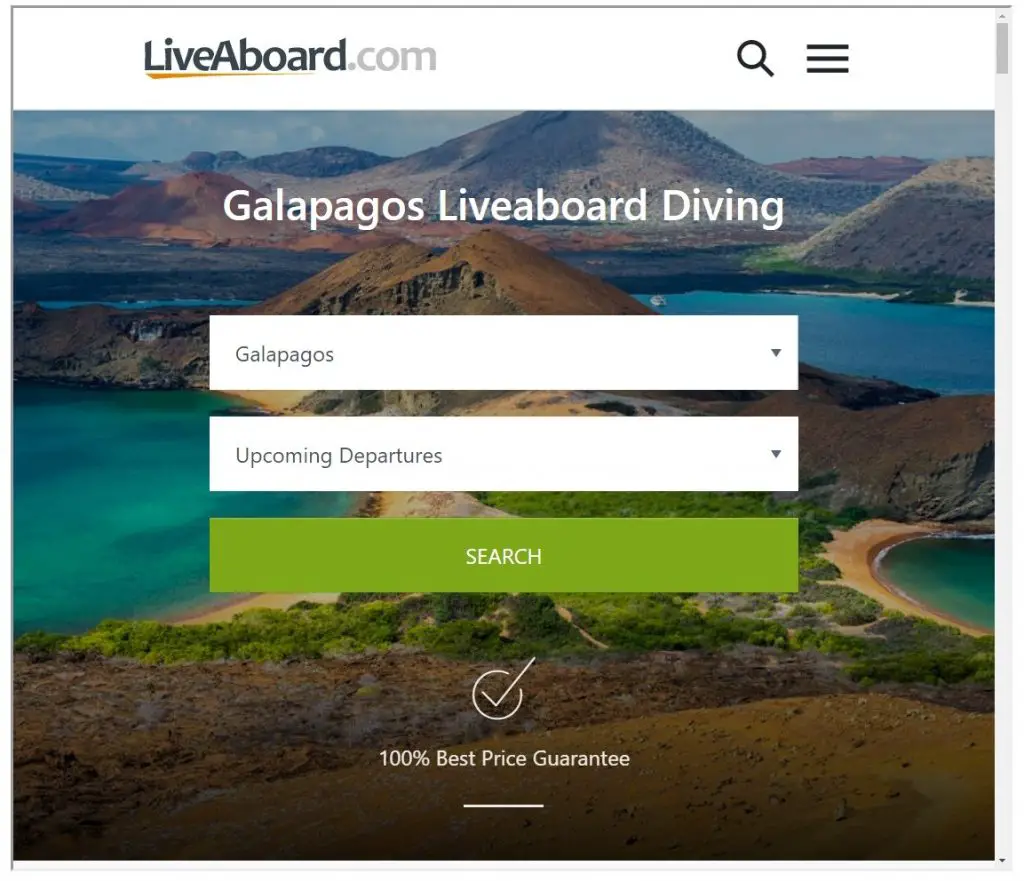
Jonathan Bird’s Hammerhead Sharks
Shark expert Jonathan Bird explores more about the hammerheads in the Galápagos Islands, and why they are there.
Of all the animals in the oceans, the hammerhead shark may be one of the strangest looking. The exact purpose of the wide, flat head is a mystery, but several theories abound. We travel to the shark-infested waters of the Galapagos in Ecuador and to a research station in Hawaii to learn about the unusual habits of these sinister-looking sharks. Jonathan swims in schools of hundreds of hammerheads, and yet the sharks ignore him. What are the sharks up to?
But now let’s look at the best time to see hammerheads in Galapagos Islands.
When is the best time to see hammerheads in Galapagos
Whilst there are certain times of the year when there are more hammerhead sharks seen in the Galapagos Islands, you can see them throughout the year.
But you’ll be pleased to know that the best time to see hammerheads in Galapagos is during the warm season, especially if you don’t like diving when its cold!
During the cooler season, hammerhead sharks are seen in the Galapagos Islands, but in more sporadic schooling behaviours and in smaller numbers.
It would appear that hammerheads are especially prevalent around Darwin and Wolf Islands from December through May. According to Galapagos Conservation Trust hammerhead sharks are in the Galapagos Marine Reserve all year round. But they claim that their abundance is highest in January and lowest in May.
January through May are the warm and wet months for the Galapagos Islands. The water temperatures are between 20-25°C (68 to 77°F) at this time of year, but can sometimes reach 28°C (82°F). At this time of year the conditions are generally better. The waters are calmer, the currents are milder and the visibility is better too. Note also at this time of year air temperatures range from 29°-35°C (85-95°F).
Another bonus to diving at this time of year is to take advantage of the calmer seas, where if the liveaboard boat makes its way to Marshall’s Cape on Isabela Island, you’ll be able to dive with the giant manta rays too.
For your best chance to see the schooling hammerheads, you are better off booking yourself on a liveaboard to dive the Galápagos Islands.
More Reading: The best luxury dive liveaboard Galapagos (Dive in Luxury & Comfort)
Where is the best place to see the schooling hammerheads of the Galapagos Islands?
The best place to see the schooling hammerheads where they are most common in the Galapagos Islands is at the northern Island of Darwin, which is famous for its stone arch. But also Wolf Island is a great place to see them too and occasionally around Kicker Rock.
But as already explained, to visit and dive the two main hammerhead islands is by liveaboard boat only. Plus you need to be a more experienced diver to dive there due to the depths of the dives and the currents. These dives are mostly drift dives.
More Reading: 5 best budget dive liveaboards Galapagos Islands (Affordable diving)
Make sure if you’re a PADI diver to get your advanced open water and advanced deep water certifications. Or if you are a BSAC certified diver, you need to progress to a Sports Diver level and make sure you have had experience of drift diving.
Of course hammerheads need to breed, but where are the young hammerheads found in the Galapagos? In this National Geographic video, this questions is answered. They discovered this nursery for scalloped hammerheads around the Santa Cruz Island of the Galapagos Islands.
In the Galápagos Islands, Ecuadorian scientists recently discovered a nursery for scalloped hammerhead sharks.
More Reading: Scuba Diving Liveaboard Cocos Island Costa Rica (Diving with Hammerheads)
I hope you enjoyed this article about the best time to see hammerheads in Galapagos
I’d love to hear from you. Tell us about your adventures of diving and snorkeling, in the comments below. Please also share your photos. Either from your underwater cameras or videos from your waterproof Gopro’s!
If this article hasn’t answered all of your questions. If you have more questions either about snorkeling or scuba diving (or specifically about the best time to see hammerheads in Galapagos), please comment below with your questions.

